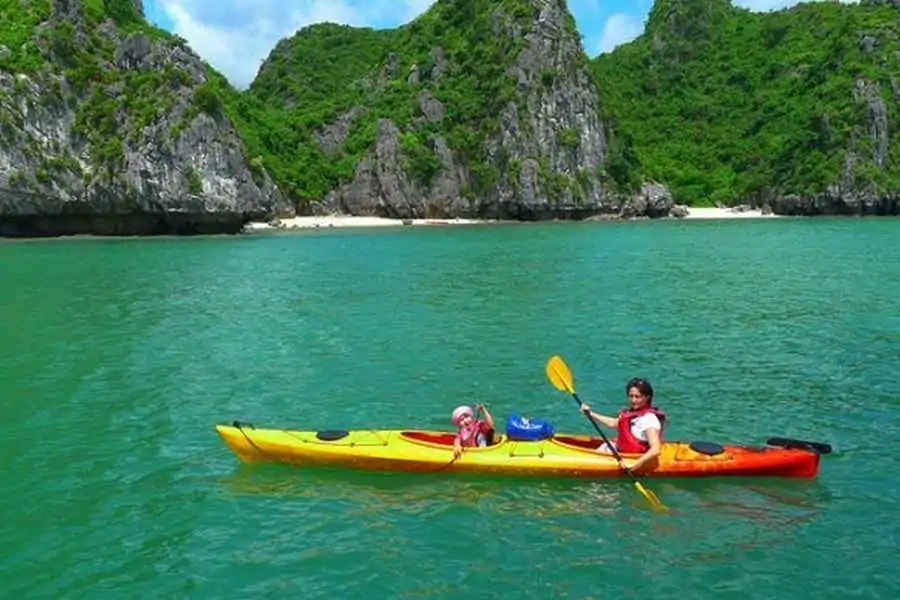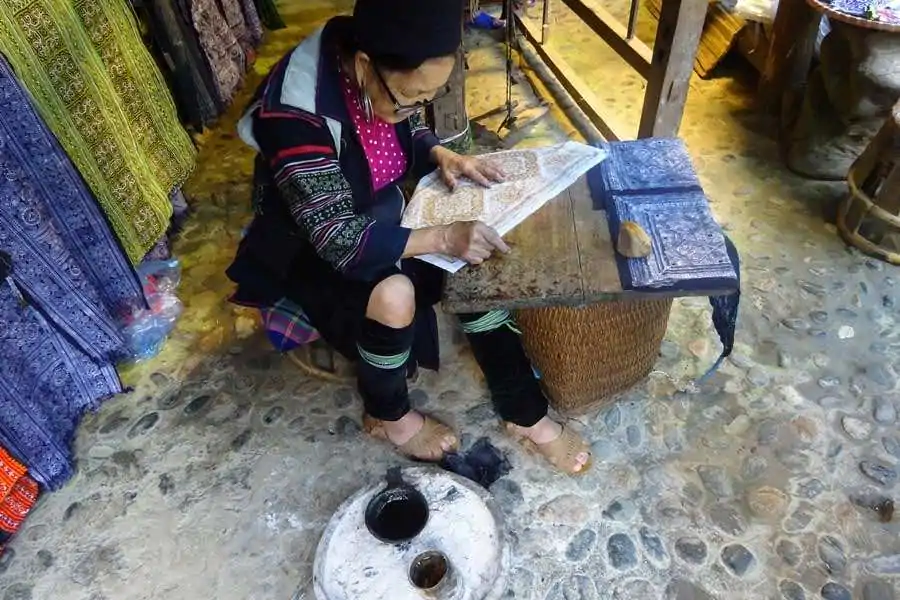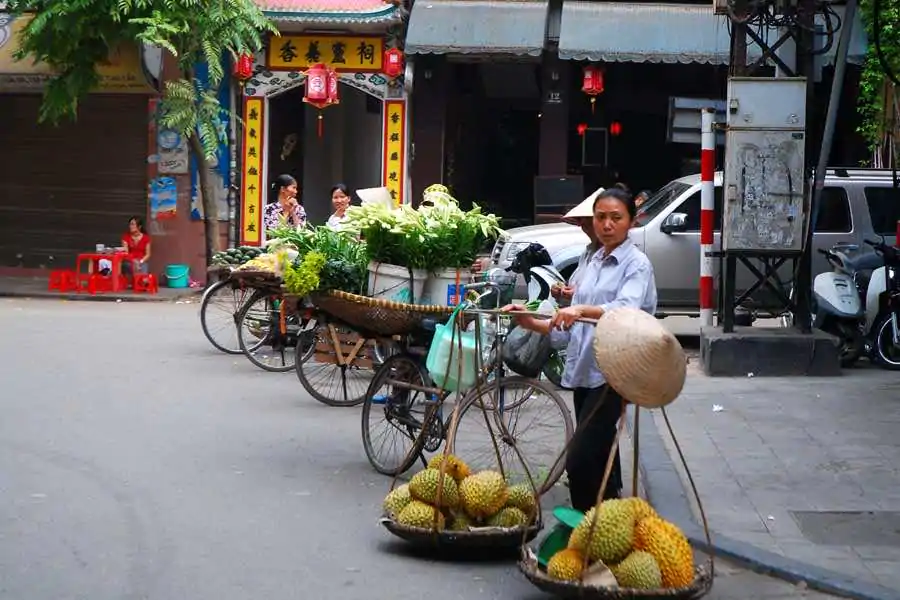Hanoi
Capital of Vietnam, Hanoi is often used as an entry into the country for those seeking to photograph striking Ha Long Bay or the mountainous regions of the north. However, this small but remarkable city provides some unique photo opportunities of its own. Hoan Kiem lake is the best place to start, offering visitors a green oasis with an island pagoda, rich in legend and culture that’s bound to inspire the artistic.
The city is best explored by car or motorbike, both of which provide tourists with the chance to make their own way around the area without being restricted by train or bus schedules. Car insurance is recommended due to the almost chaotic driving system, which can confused first time visitors. However, it is just as inexpensive to hire a car with a driver, which can save stress and hassle for those nervous about driving themselves.
Hanoi holds a huge amount of French influence and is often referred to as the Paris of the Orient. Featuring elegant embassies and beautiful relics of the country’s past such as the Mausoleum of Ho Chi Minh, the city is perfect for those seeking something a little different. The Old Quarter is also a wonderful destination for those looking for the best photo opportunities thanks to its charming streets and vibrant local markets filled with colourful offerings. Many of the streets maintain the city’s tradition of offering just one form of goods, providing countless chances for photographers to capture the abundance of distinctive charm offered throughout this beautiful city.
Ha Long Bay
Ha Long Bay in the north-east of Vietnam is 165km from the capital Hanoi and covers an area of 43,400 hectares. Featuring 1,600 islands and islets, most of which are completely untouched by humans, it provides photography gurus with a spectacular seascape of limestone pillars and mysterious natural caves. The huge number of islands and islets make it a natural limestone maze that offers hugely varied scenery thanks to their varying sizes and shapes.
Of course, such a beautiful and unaltered paradise is not easy to reach, and any avid camera enthusiasts will have to travel by boat to see the best that Ha Long has to offer. There are a huge number of tours available, from budget day tours to three day cruises, each offering a different experience of these vast limestone islands. For those looking to snap some photos, however, the longer tours offer more of an opportunity and can also include an night sleeping at sea, providing a unique view of the area that’s missed by many.

Sapa: Terraced Rice Fields and Ethnic Diversity
Nestled in the northwestern region of Vietnam, Sapa is a picturesque town that has become a popular destination for photographers and travelers alike. The town’s primary draw is its stunning landscape, which features a tapestry of terraced rice fields that cascade down the mountainsides, creating a mesmerizing visual spectacle.
Capturing the Terraced Rice Fields
The best time to capture the Sapa rice terraces is during the harvest season, typically from late August to September. During this time, the fields are adorned with a vibrant golden hue, creating a striking contrast against the lush green foliage and the surrounding mountains. To get the most out of your photographic experience, consider the following tips:
- Arrive early in the morning or late in the afternoon to take advantage of the soft, warm light that casts a magical glow over the landscape.
- Experiment with different angles and perspectives to capture the sweeping vistas and the intricate patterns of the terraced fields.
- Use a wide-angle lens to encompass the grandeur of the landscape, or a telephoto lens to isolate specific elements and create a more intimate composition.
- Include local farmers working in the fields to add a human element to your images and tell a more compelling story.
Exploring Ethnic Minority Villages - Sapa is also home to a diverse array of ethnic minority groups, each with their own unique cultural traditions and traditional dress.
- Visiting these villages can be a rewarding experience for photographers, as they offer opportunities to capture vibrant portraits and scenes of daily life.
Some of the ethnic minority groups you may encounter in Sapa include the H’mong, the Dao, and the Giay. To make the most of your village visits, consider the following:
- Respect the local customs and traditions, and ask for permission before taking photographs.
- Engage with the villagers and try to learn about their way of life, as this will help you capture more authentic and meaningful images.
- Experiment with different lenses and focal lengths to create a variety of compositions, from intimate portraits to wider scenes of the village.
- Be patient and observe the rhythms of daily life, as this will allow you to capture candid and natural-looking moments.
Cao Bang: Dramatic Landscapes and Majestic Waterfalls
Nestled in the northeastern region of Vietnam, Cao Bang is a province that boasts some of the country’s most breathtaking natural wonders. From the towering limestone cliffs of the Nguom Ngao Cave to the cascading waters of the Ban Gioc Waterfall, this destination is a true paradise for landscape photographers.
Exploring the Nguom Ngao Cave
The Nguom Ngao Cave is a stunning natural wonder that is sure to captivate photographers. This massive limestone cave features a labyrinth of chambers, each with its own unique geological formations, including stalactites, stalagmites, and intricate rock formations.
To capture the best images of the Nguom Ngao Cave, consider the following tips:
- Use a wide-angle lens to capture the grand scale and dramatic proportions of the cave’s interior.
- Experiment with different lighting setups, such as using a flashlight or a portable lighting rig, to highlight the cave’s intricate features.
- Be mindful of your camera settings, as the low-light conditions of the cave can be challenging to work with. Adjust your ISO, aperture, and shutter speed accordingly.
- Look for unique angles and compositions that showcase the cave’s abstract and otherworldly qualities.
Capturing the Magnificence of Ban Gioc Waterfall
The Ban Gioc Waterfall is a stunning natural wonder that straddles the border between Vietnam and China. This majestic cascade, which is one of the largest transnational waterfalls in the world, is a must-visit destination for photographers seeking to capture the power and beauty of nature.
To make the most of your photographic experience at Ban Gioc Waterfall, consider the following tips:
- Arrive early in the morning or late in the afternoon to take advantage of the soft, warm light that enhances the waterfall’s colors and textures.
- Use a tripod to capture long exposures, which can create a dreamy, ethereal effect and highlight the movement of the water.
- Experiment with different perspectives, such as shooting from the base of the waterfall or from the surrounding cliffs, to capture the full scale and grandeur of the cascade.
- Include elements of the surrounding landscape, such as the lush greenery and the limestone cliffs, to create a more comprehensive and visually striking composition.
Ha Giang: Rugged Mountains and Winding Roads
Located in the northernmost region of Vietnam, Ha Giang is a province that is renowned for its breathtaking landscapes and rugged mountain terrain. From the winding roads that snake through the peaks to the vibrant ethnic minority communities that call this region home, Ha Giang is a true paradise for photographers seeking to capture the raw, untamed beauty of Vietnam.
Navigating the Winding Roads of Ha Giang
One of the most iconic photographic experiences in Ha Giang is the journey along the winding roads that connect the province’s various destinations. These roads, which are often referred to as the “Happiness Road,” offer stunning vistas of towering mountains, lush valleys, and cascading waterfalls.
To capture the best images of the Ha Giang roads, consider the following tips:
- Use a wide-angle lens to capture the sweeping panoramas and the dramatic curves of the roads.
- Experiment with different angles and perspectives, such as shooting from the side of the road or from a higher vantage point.
- Be mindful of safety and only stop in designated areas to avoid disrupting traffic or putting yourself in harm’s way.
- Consider using a drone or a GoPro camera to capture aerial footage of the winding roads and the surrounding landscape.
- Exploring the Ethnic Minority Communities
- In addition to its breathtaking natural landscapes, Ha Giang is also home to a diverse array of ethnic minority groups, each with their own unique cultural traditions and traditional dress. Visiting these communities can be a rewarding experience for photographers, as they offer opportunities to capture vibrant portraits and scenes of daily life.
Some of the ethnic minority groups you may encounter in Ha Giang include the H’mong, the Dao, Lolo, Lolo Chai and the Tay. To make the most of your village visits, consider the following:
- Respect the local customs and traditions, and ask for permission before taking photographs.
- Engage with the villagers and try to learn about their way of life, as this will help you capture more authentic and meaningful images.
- Experiment with different lenses and focal lengths to create a variety of compositions, from intimate portraits to wider scenes of the village.
- Be patient and observe the rhythms of daily life, as this will allow you to capture candid and natural-looking moments.
Mu Cang Chai
Visiting Mu Cang Chai is a must. This most unusual and beautiful of landscapes is studded with terraced rice fields that stretch for miles down the mountain sides. Between these, you’ll be able to notice wooden huts and houses that further make the landscape more striking to look at. Traversing the roads there can be slightly more difficult, but not impossible by any stretch – however many tourists like to visit when the fields are green and at their most stunning.
- Timing: Capture the fields in the soft morning light or golden hour for the best results.
- Details: Zoom in on the patterns and textures of the terraces to create compelling close-up shots.
- Human Elements: Include local farmers to add scale and narrative to your images.
Hoi An: Historic Charm and Vibrant Cityscapes
Hoi An’s historic architecture, vibrant cityscapes, and cultural vibrancy provide endless opportunities for photographers to create stunning images. To make the most of your photographic journey in Hoi An, consider the following tips:
- Golden Hour Magic: Utilize the soft, warm light of the golden hour during sunrise and sunset to capture Hoi An’s historic buildings and bustling streets in their best light.
- Play with Reflections: Take advantage of Hoi An’s picturesque riverside setting to capture reflections of colorful boats, lantern-lit bridges, and charming architecture on the water’s surface.
- Explore Side Streets: Venture off the beaten path and explore Hoi An’s lesser-known alleyways and side streets, where you’ll find hidden gems and unique photo opportunities away from the crowds.
- Capture Daily Life: Document the everyday moments of Hoi An’s residents going about their lives, whether it’s cooking at a street food stall, shopping at a local market, or engaging in traditional crafts.
Mekong Delta
Covering an area of around 15,000 square miles, the Mekong Delta is where the stunning Mekong River finishes its 2,700 mile journey from the Tibetan plateau to the South China Sea. Surrounded by an area of tropical forests and fertile land, the location is commonly known as the ‘rice bowl’ of Vietnam thanks to it’s the large production of rice crops in the area.
Sometimes overlooked by tourists seeking purely inner-city experiences, the Mekong Delta is a lesser-explored utopia of waterways, bustling river communities and cottage industries that survive on the mighty river. The river and surrounding landscapes provide a great opportunity for photography, but the busy floating markets are more than capable of providing unique photo opportunities of their own.
It’s easy to reach the Mekong Delta by car or train thanks to the transport links of the nearby Ho Chi Minh City, but once you’ve arrived you’ll rely almost exclusively on boats for transportation. As with Ha Long Bay, there are a huge number of cruises and tours available that allow tourists of any budget to experience the natural beauty of the area, many of which will provide trained guides to ensure you have the opportunity to catch some of the most unique views on camera.
Conclusion
Vietnam offers a plethora of stunning destinations that are truly worth capturing on camera. From the majestic Ha Long Bay with its untouched islands to the terraced rice fields of Sapa and the dramatic landscapes of Cao Bang, Vietnam is a photographer’s paradise.
Exploring the historic charm of Hanoi, the vibrant cityscapes of Hoi An, and the rural beauty of Mu Cang Chai provide unique opportunities for capturing the essence of Vietnam through photography. The ethnic diversity, natural wonders, and cultural richness of these destinations make Vietnam a perfect travel spot for those seeking breathtaking photo opportunities.
Whether you are interested in capturing serene landscapes, bustling city life, or traditional cultural scenes, Vietnam’s diverse array of destinations has something to offer every photography enthusiast. So grab your camera and get ready to capture the beauty and charm of Vietnam’s most captivating locales.
Contact us today to get a free trip designed just for you. Experience the wonders of Vietnam through a customized itinerary tailored to your preferences and interests.
 Tuan
Tuan April 25, 2019
April 25, 2019 Travel Guide
Travel Guide
 488
488 YOU MAY ALSO LIKE
YOU MAY ALSO LIKE
 read more
read more
